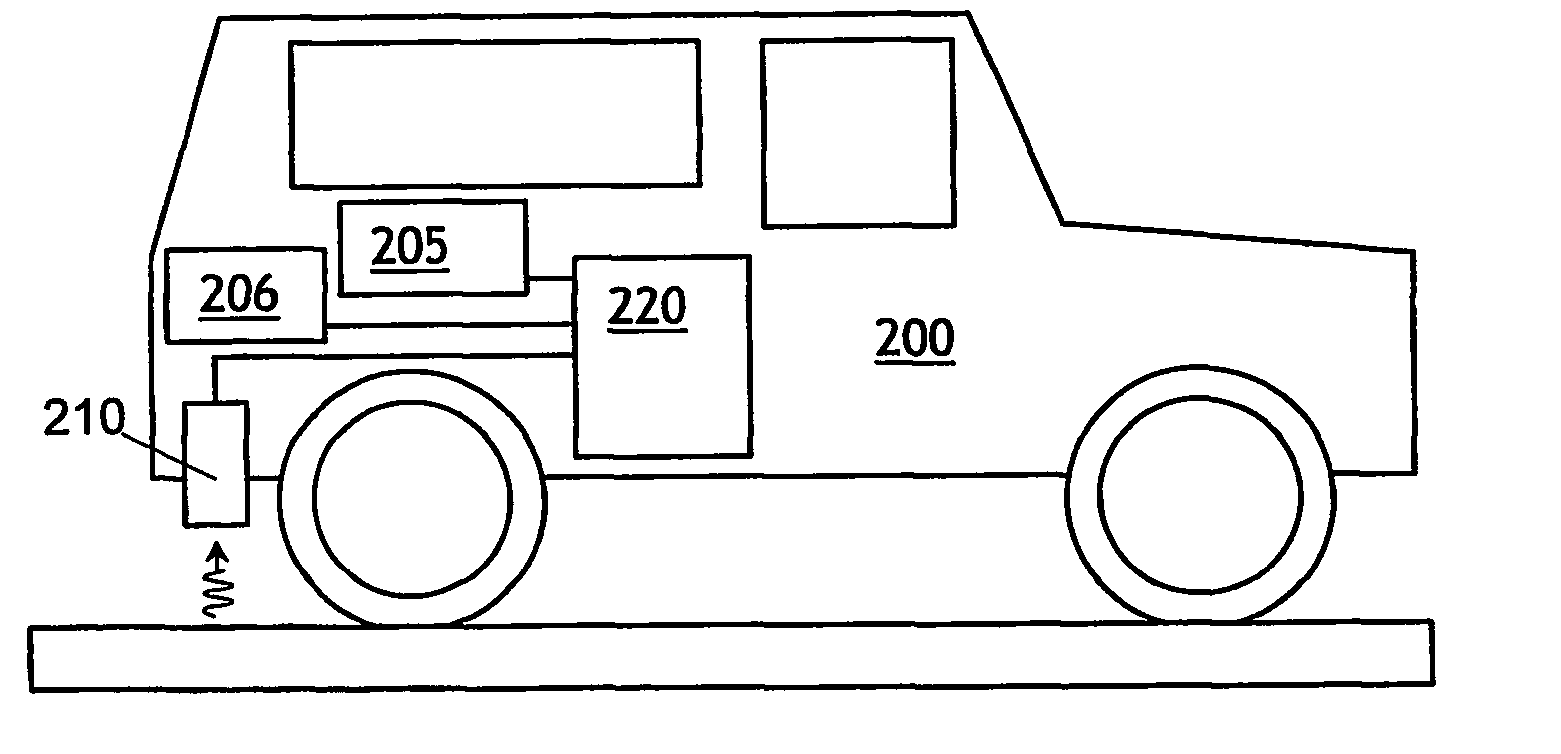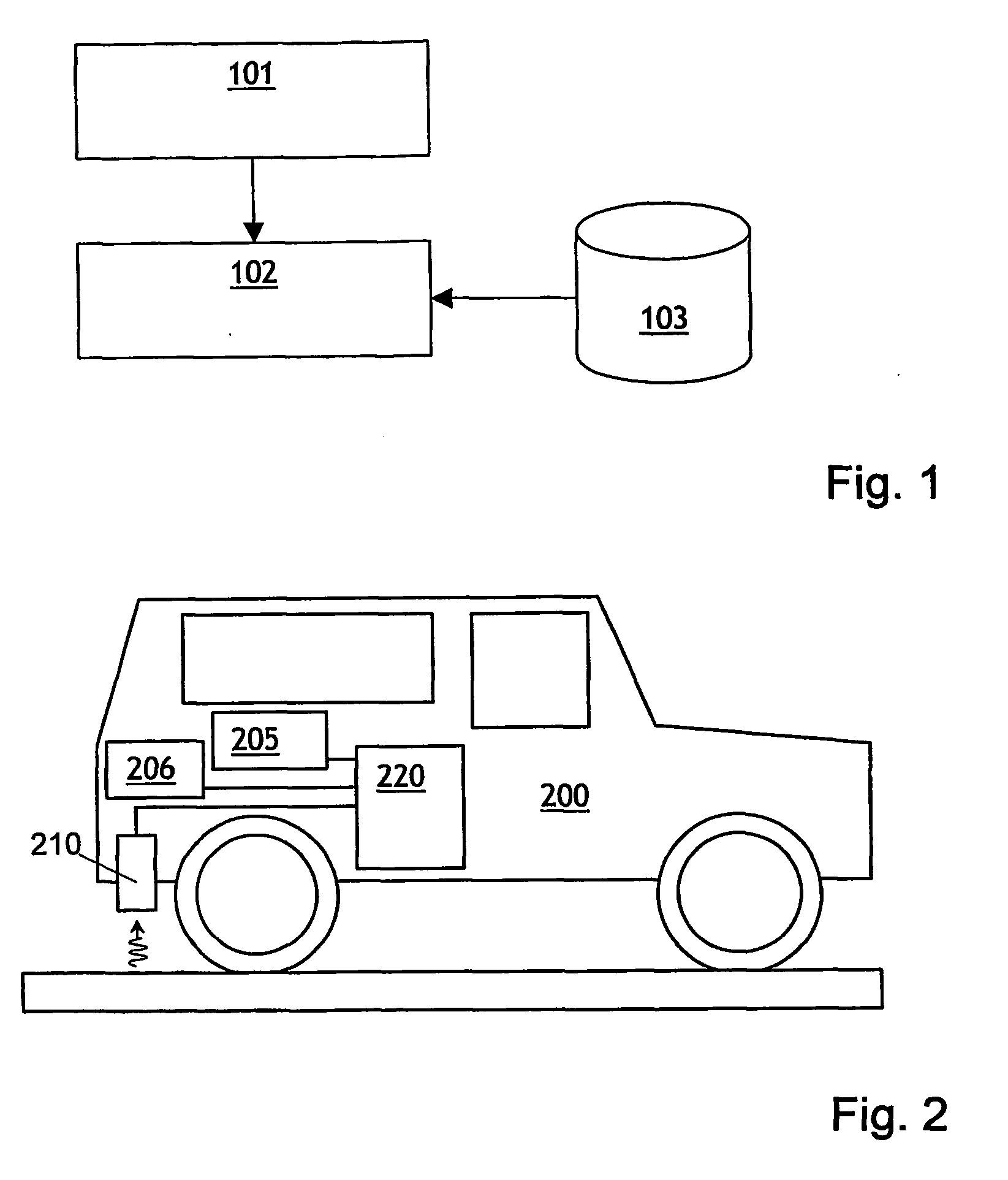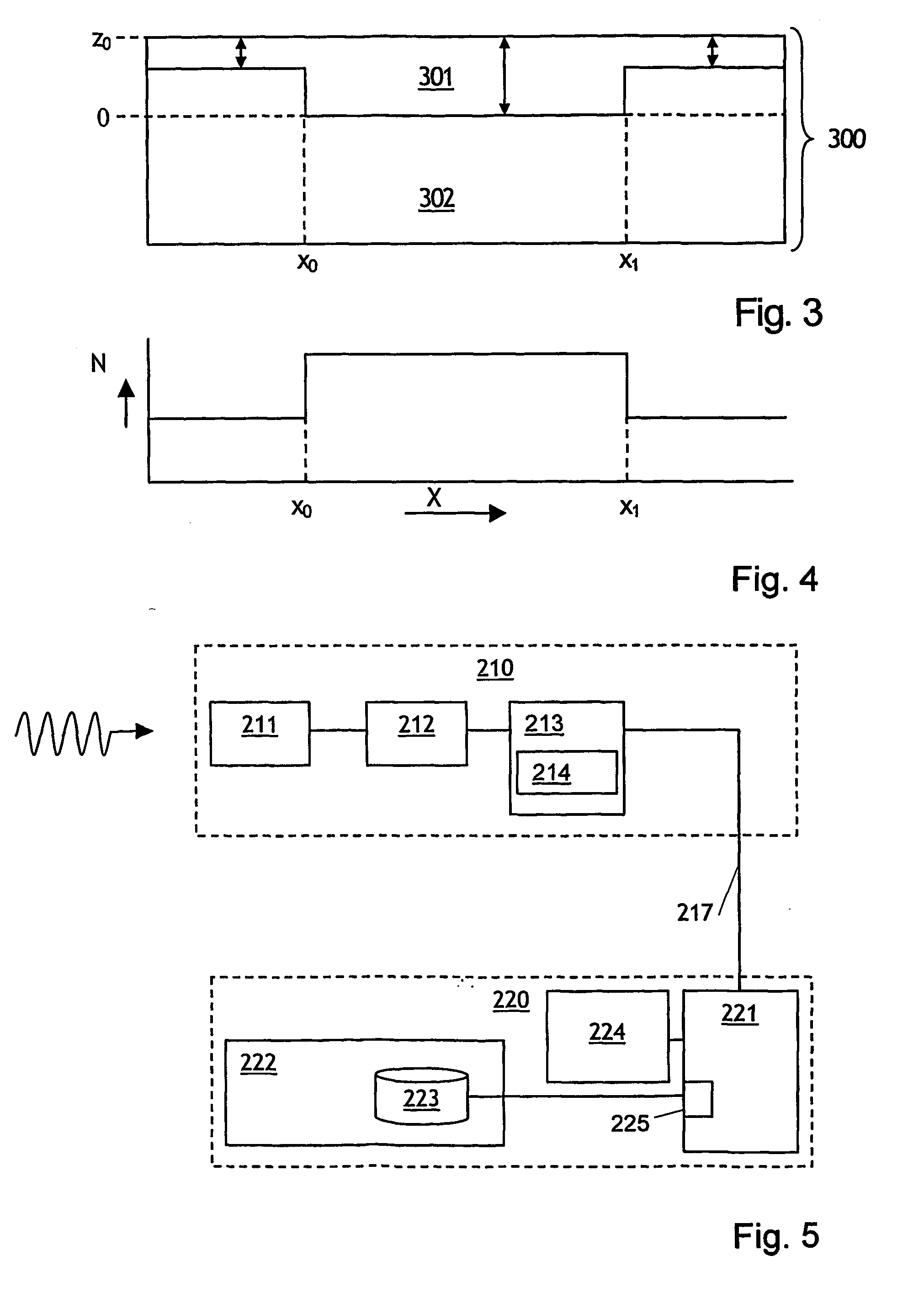Method and system for detecting a property of a pavement by measuring gamma-radiaton
- Summary
- Abstract
- Description
- Claims
- Application Information
AI Technical Summary
Benefits of technology
Problems solved by technology
Method used
Image
Examples
Embodiment Construction
[0015] In the example of a method according to the invention shown in FIG. 1, in step 101 a flux of γ-radiation received from a road surface is measured. The flux, which may also be expressed in terms of the intensity of the radiation or the amount of radiation received over a period of time, can be determined for radiation emitted by a single radionuclide (for instance 40K, 232Th, 238U or the products of their radioactive decay) or for radiation emitted by several radionuclides. Which method is to be preferred depends on the composition of the pavement layer or layers and of the roadbed and on the property or properties to be measured. In step 102, a property of the pavement is determined from the measured flux or fluxes and data on the relation between the measured flux or fluxes and the property to be determined. The data on the relationship between measured flux and the property of the pavement layer to be determined, such as the materials used in the pavement or the thickness o...
PUM
 Login to view more
Login to view more Abstract
Description
Claims
Application Information
 Login to view more
Login to view more - R&D Engineer
- R&D Manager
- IP Professional
- Industry Leading Data Capabilities
- Powerful AI technology
- Patent DNA Extraction
Browse by: Latest US Patents, China's latest patents, Technical Efficacy Thesaurus, Application Domain, Technology Topic.
© 2024 PatSnap. All rights reserved.Legal|Privacy policy|Modern Slavery Act Transparency Statement|Sitemap



